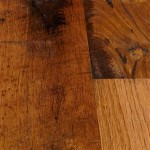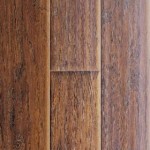Engineered Wood Flooring Panels: A Comprehensive Overview
Engineered wood flooring panels have become a prevalent choice for both residential and commercial spaces, offering a combination of aesthetic appeal, durability, and relative affordability. This type of flooring is constructed using multiple layers, resulting in a product that is distinct from solid hardwood. Understanding the composition, manufacturing processes, advantages, disadvantages, and maintenance requirements of engineered wood flooring panels is crucial for making informed decisions regarding flooring investments.
The fundamental difference between engineered wood and solid hardwood lies in their construction. Solid hardwood is made from a single piece of wood, while engineered wood comprises several layers bonded together. This multi-layered construction is key to engineered wood's stability and resistance to warping and expansion, particularly in environments with fluctuating humidity levels. The top layer, often referred to as the veneer, is a thin slice of real hardwood, providing the visual characteristics and tactile feel of solid wood.
The core layers beneath the veneer typically consist of materials such as plywood, high-density fiberboard (HDF), or softwood. These core materials contribute to the panel's overall strength and stability. The arrangement of these layers, often with alternating grain directions, further enhances the floor's resistance to movement caused by moisture or temperature changes. This layered construction also allows for a wider range of plank widths and lengths compared to solid hardwood, providing greater design flexibility.
Key Components of Engineered Wood Flooring Panels
Understanding the individual components of engineered wood flooring panels is essential for evaluating their quality and performance. The top layer, the core, and the backing each play a specific role in determining the floor's appearance, stability, and longevity.
Veneer Layer: The veneer layer is the visible surface of the flooring and is typically made from a variety of hardwood species, including oak, maple, walnut, hickory, and cherry. The thickness of the veneer is a critical factor, influencing the floor's durability and its capacity to be refinished. Thicker veneers allow for more sanding and refinishing cycles, extending the lifespan of the flooring. Veneer thickness is usually measured in millimeters, with thicker veneers generally being more expensive. The cut of the veneer, such as plain sawn, quarter sawn, or rift sawn, also affects the appearance of the grain pattern and the overall aesthetic.
Core Layer: The core layer provides the structural support and stability for the flooring panel. Plywood cores are known for their strength and resistance to moisture. HDF cores offer excellent dimensional stability and are denser than plywood, making them less susceptible to expansion and contraction. Softwood cores are also used, often in combination with other materials, and contribute to the overall stability of the plank. The quality of the core material is crucial in preventing warping, cupping, and buckling, particularly in environments with high humidity or moisture exposure.
Backing Layer: The backing layer is the bottommost layer of the engineered wood panel and provides additional stability and moisture resistance. It typically consists of a thin layer of wood or a composite material. The backing helps to balance the stresses within the panel and prevents it from warping or bowing. A high-quality backing layer contributes to the overall durability and longevity of the engineered wood flooring.
Manufacturing Processes and Quality Control
The manufacturing process of engineered wood flooring panels is a carefully controlled process involving several stages, from selecting the raw materials to applying the finish. Quality control measures are implemented throughout the process to ensure that the final product meets the required standards for dimensional accuracy, veneer quality, and overall performance.
The process begins with the selection of the hardwood veneer. The logs are carefully chosen based on their species, grain pattern, and color. The logs are then sliced into thin veneers using a variety of methods, such as sawing, peeling, or slicing. The chosen method affects the grain pattern and the appearance of the veneer.
The core layers are then manufactured from plywood, HDF, or softwood. The core materials are cut into precise dimensions and bonded together using adhesives. The grain direction of each layer is typically oriented at right angles to the adjacent layer, which enhances the stability of the panel.
The veneer is then bonded to the core layer using adhesives and pressure. The adhesive must be strong and durable to ensure that the veneer remains firmly attached to the core layer over time. Heat and pressure are applied to ensure a strong bond between the veneer and the core.
After bonding, the panels are sanded and finished. The sanding process creates a smooth surface for the finish to adhere to. The finish protects the veneer from wear and tear and enhances its appearance. A variety of finishes are available, including polyurethane, acrylic, and oil-based finishes. Each finish offers different levels of durability, scratch resistance, and gloss level.
Throughout the manufacturing process, quality control checks are performed to ensure that the panels meet the required standards. These checks include dimensional measurements, veneer inspections, and finish evaluations. Panels that do not meet the standards are rejected.
Advantages and Considerations of Engineered Wood Flooring
Engineered wood flooring panels offer several advantages over solid hardwood flooring, making them a popular choice for various applications. However, there are also considerations that need to be taken into account when selecting this type of flooring.
Stability: Engineered wood is significantly more stable than solid hardwood, especially in environments with fluctuating humidity levels. The multi-layered construction resists expansion and contraction, reducing the risk of warping, cupping, and buckling. This makes engineered wood a suitable option for basements, kitchens, and bathrooms where moisture levels may be higher.
Installation: Engineered wood flooring can be installed using a variety of methods, including gluing, nailing, stapling, or floating. Floating installations are particularly popular as they are relatively easy to install and do not require adhesives or fasteners. This makes engineered wood a suitable option for DIY projects.
Cost: Engineered wood is often less expensive than solid hardwood, especially when considering the installation costs. The lower cost is due to the reduced amount of hardwood used and the simpler installation methods.
Versatility: Engineered wood is available in a wide range of species, colors, and styles, offering greater design flexibility. The veneer layer can be made from any hardwood species, allowing for a variety of aesthetic options.
Refinishing: Depending on the thickness of the veneer layer, engineered wood flooring can be refinished to restore its appearance. Thicker veneers allow for more sanding and refinishing cycles, extending the lifespan of the flooring. However, it is important to note that not all engineered wood flooring can be refinished.
Durability: While engineered wood is durable, it is not as resistant to scratches and dents as solid hardwood. The veneer layer is thinner than solid hardwood, making it more susceptible to damage. However, some engineered wood flooring products are finished with a durable coating that provides added protection.
Moisture Resistance: Although engineered wood is more resistant to moisture than solid hardwood, it is still susceptible to water damage. Prolonged exposure to moisture can cause the core layers to swell and delaminate. It is important to clean up spills promptly and avoid using excessive amounts of water when cleaning the floor.
Resale Value: While engineered wood flooring can increase the resale value of a home, it may not add as much value as solid hardwood. However, a well-maintained engineered wood floor can still be a desirable feature for potential buyers.
Ultimately, the choice between engineered wood and solid hardwood depends on individual needs and preferences. Engineered wood is a practical option for those seeking a stable, versatile, and cost-effective flooring solution, while solid hardwood remains a premium choice for those prioritizing durability and longevity.
Proper maintenance of engineered wood flooring is crucial for preserving its appearance and extending its lifespan. Regular cleaning, protection from scratches and dents, and prompt attention to spills are essential for maintaining the floor's beauty and integrity.

Engineered Flooring Vs Laminate Everything You Need To Know Forbes Home

Hardwood Vs Engineered Wood Flooring Which Is Best For You Forbes Home

Wood Design Panels Flooring

Best Engineered Wood Flooring Options Forbes Home

Engineered Timber Flooring Timeless Au Blackwood Matt 190x14 3mm Bosch Floors

Can You Install Wood Flooring Over Tiled Floors Havwoods

Parquetry Panels Oslek

Luxurious Design Panels Engineered Flooring Wood

Oak Exquisite 4 Carreaux Square Parquet Panel Gjp Flooring Brighton Sussex

Hand Made Engineered Parquet Panels Case Study
Related Posts








